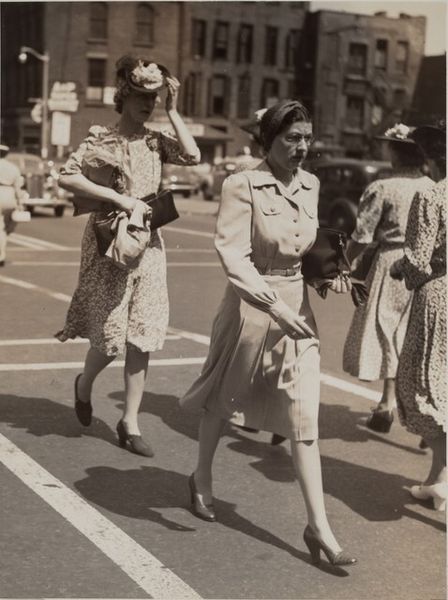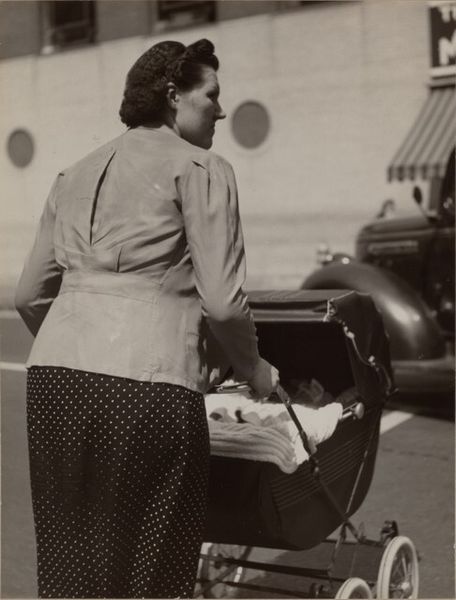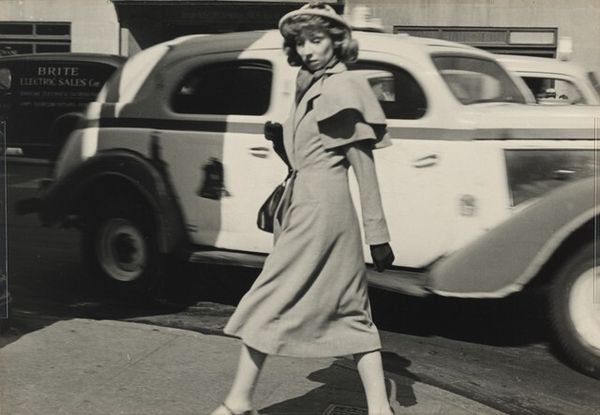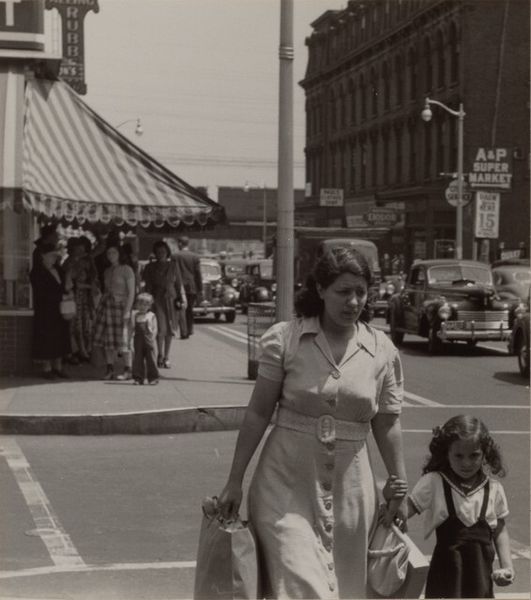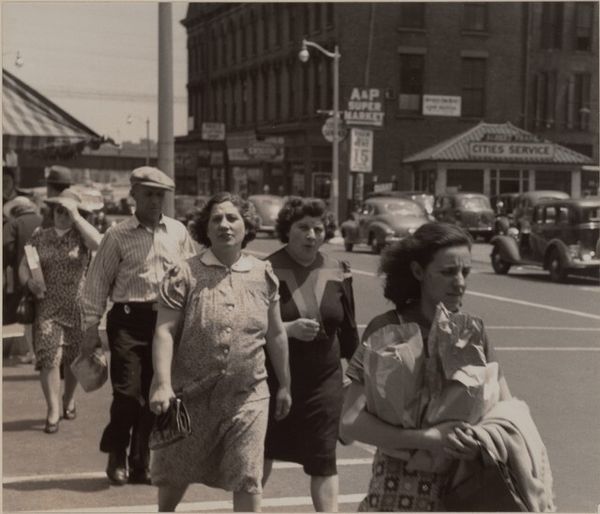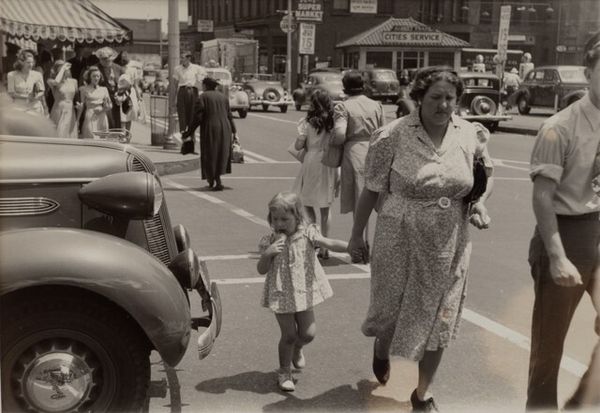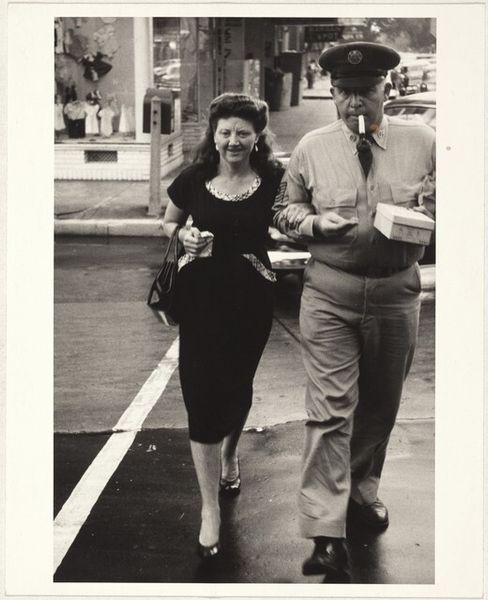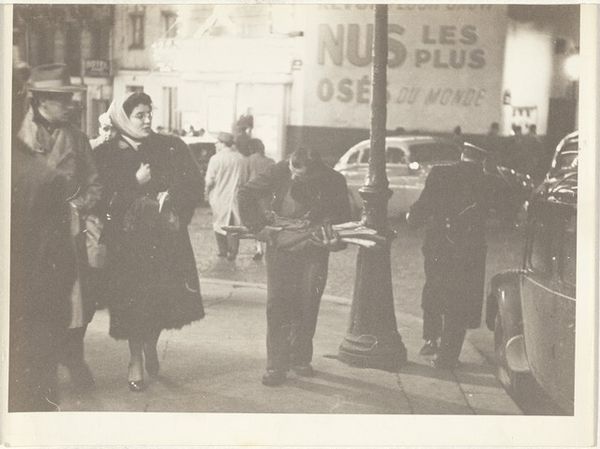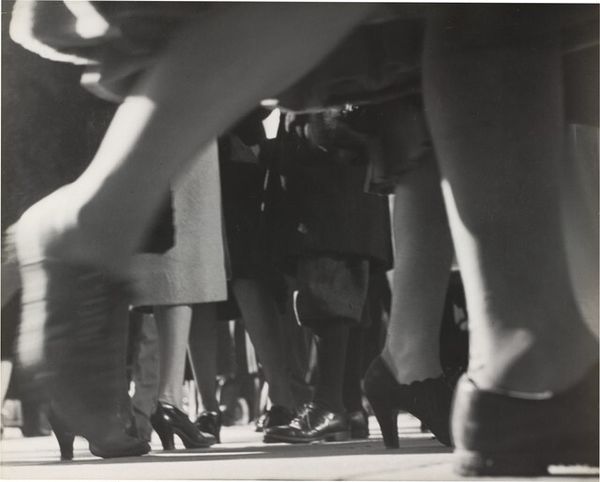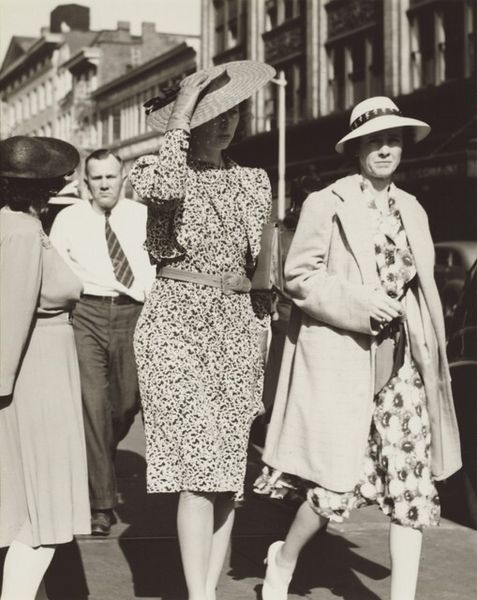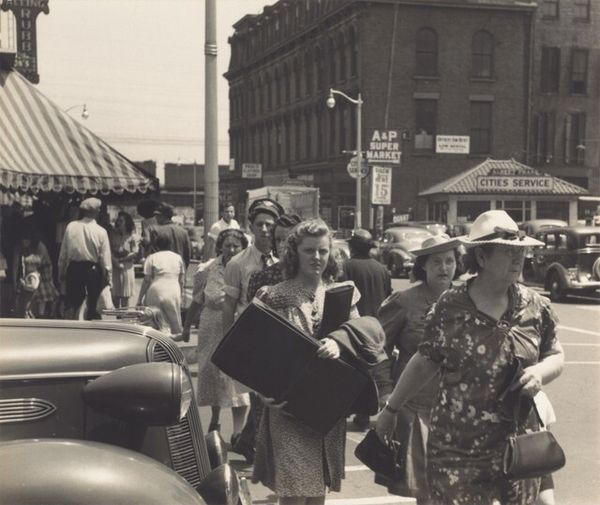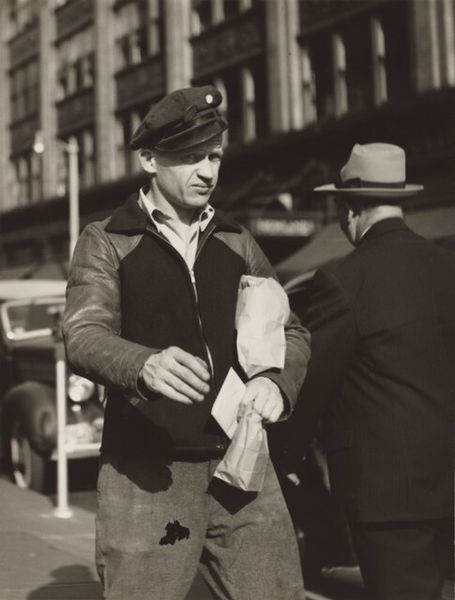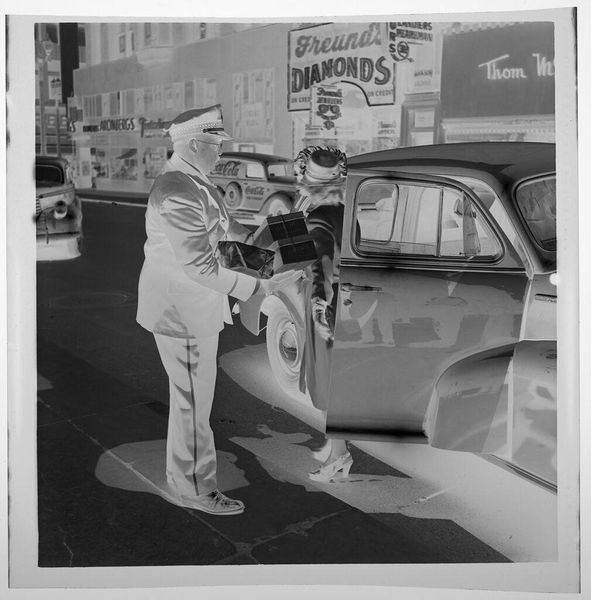
photography
#
portrait
#
landscape
#
outdoor photograph
#
social-realism
#
street-photography
#
photography
#
street photography
#
ashcan-school
#
modernism
#
realism
Dimensions: image: 22.6 × 17.4 cm (8 7/8 × 6 7/8 in.) sheet: 25.8 × 20.2 cm (10 3/16 × 7 15/16 in.)
Copyright: National Gallery of Art: CC0 1.0
Editor: Walker Evans' "Bridgeport, Connecticut" from 1941 captures a street scene in the depths of the depression. There's something so ordinary, yet poignant about the back of this woman walking away. What visual strategies does Evans employ in this photograph? Curator: Focusing solely on its formal qualities, notice the geometric structure, the sharp, decisive line cutting diagonally across the frame provided by the crosswalk. It bisects the picture plane. The photograph offers a dynamic interplay of light and shadow, especially within the awning. The woman, positioned slightly off-center, creates visual tension against the grid-like backdrop. The tonal range, predominantly monochrome, serves to emphasize textures, from the woman’s dress to the rough facade of the building. Editor: That's interesting. How does the absence of the woman's face impact the composition, then? Curator: It directs the eye to other compositional components—the curve of her head against the angular sign, the details of her dress—demanding attention to formal elements. It universalizes her; she becomes Everywoman. Evans deliberately abstracts her identity. Tell me, what effect is created by this contrast? Editor: I suppose it emphasizes the structural framework, reducing the potential for narrative. I can really appreciate how those specific forms contribute to the photo's overall composition. I see the world in new ways, now. Curator: Exactly. By minimizing the subjective, the objective qualities shine all the more, achieving powerful formal impact.
Comments
No comments
Be the first to comment and join the conversation on the ultimate creative platform.
